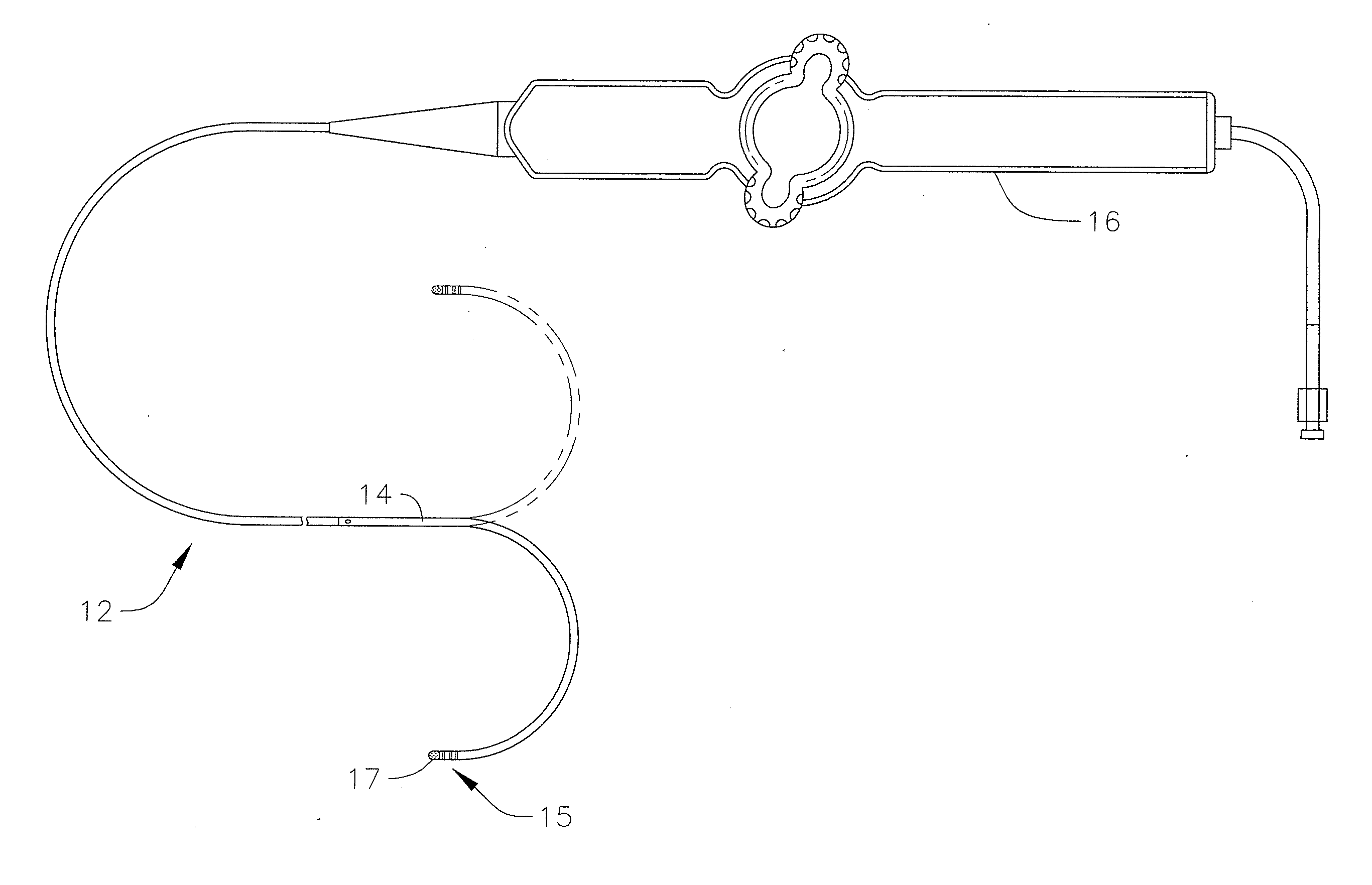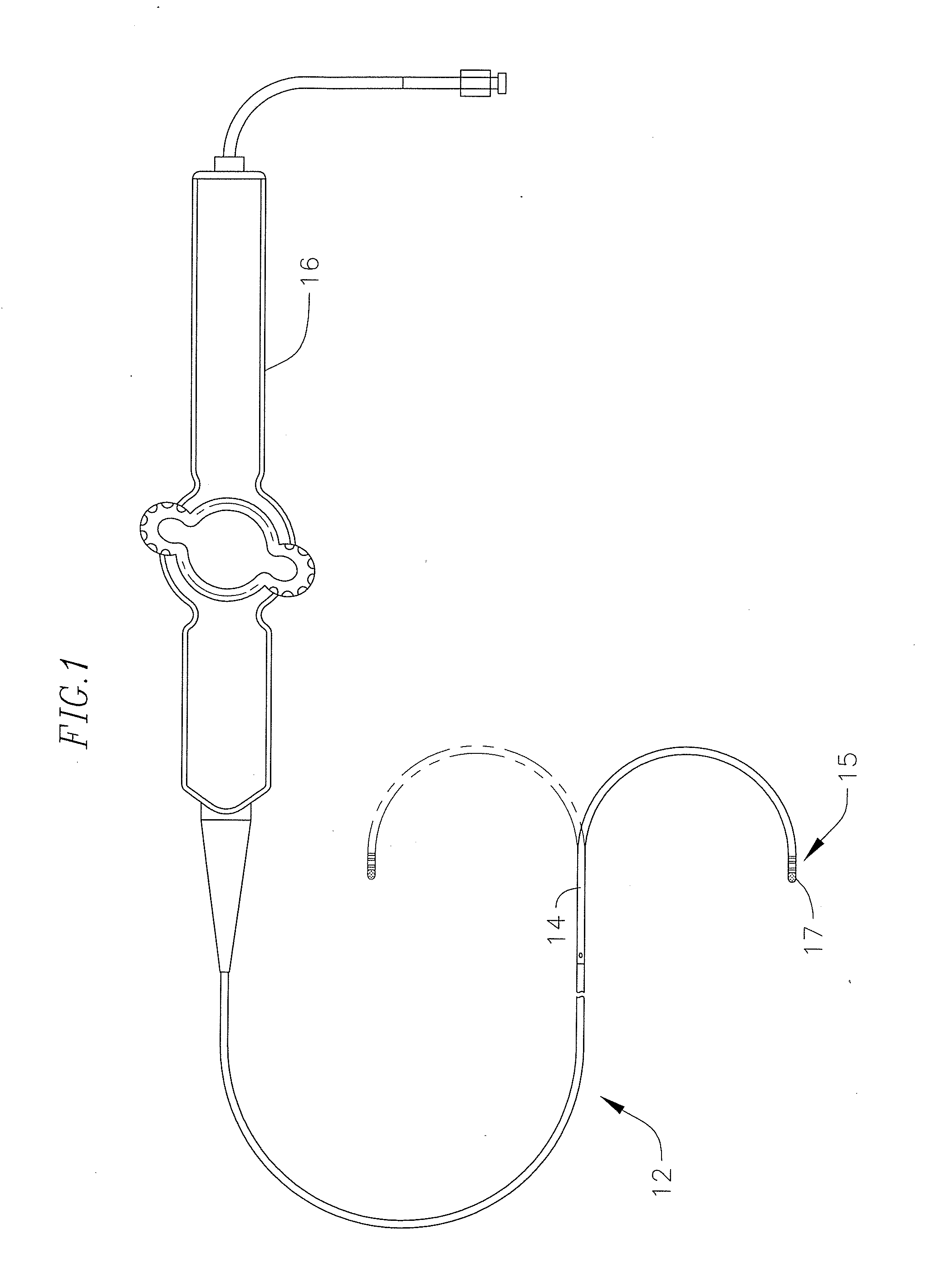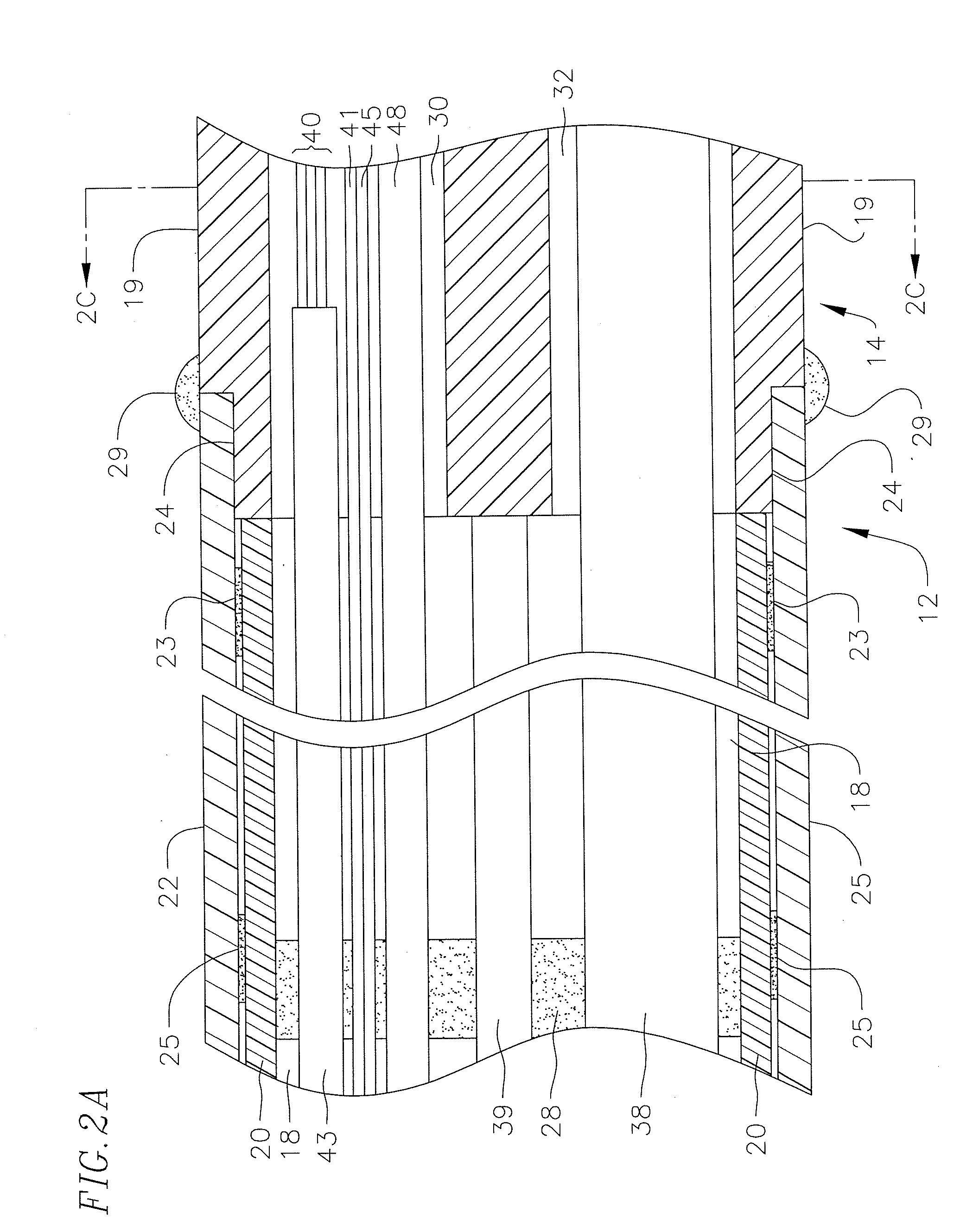Irrigated catheter with internal position sensor
a position sensor and irrigated catheter technology, applied in the field of electrophysiological catheters, can solve the problems of reducing the accuracy of the position sensing capabilities of the sensor, limiting the flexibility and deflection of the distal tip section, and forming a lesion within the cardiac tissue which is electrically non-conductive, etc., to achieve uniform flow, promote fluid diffusion and dispersion, and improve the effect of feeding fluid
- Summary
- Abstract
- Description
- Claims
- Application Information
AI Technical Summary
Benefits of technology
Problems solved by technology
Method used
Image
Examples
Embodiment Construction
[0038]FIG. 1 illustrates an embodiment of a catheter 10 with improved position sensing and cooling capabilities. The catheter has an elongated catheter body 12 with proximal and distal ends, an intermediate deflectable section 14 at the distal end of the catheter body 12, and a distal section 15 with an irrigated mapping and ablation tip electrode 17. The catheter also includes a control handle 16 at the proximal end of the catheter body 12 for controlling bi-directional deflection of the intermediate section 14. Advantageously, the tip electrode 17 houses an electromagnetic position sensor in a distal and on-axis location while shielding the sensor from RF ablation and bending stresses. The tip electrode is also configured to promote turbulent flow and dispersion of irrigation fluid for increased thermal transfer from the shell to the fluid and thus with lower flow rates resulting in lower fluid load in the patient. Fluid, e.g., saline or heparinized saline, can be delivered to the...
PUM
 Login to View More
Login to View More Abstract
Description
Claims
Application Information
 Login to View More
Login to View More - R&D
- Intellectual Property
- Life Sciences
- Materials
- Tech Scout
- Unparalleled Data Quality
- Higher Quality Content
- 60% Fewer Hallucinations
Browse by: Latest US Patents, China's latest patents, Technical Efficacy Thesaurus, Application Domain, Technology Topic, Popular Technical Reports.
© 2025 PatSnap. All rights reserved.Legal|Privacy policy|Modern Slavery Act Transparency Statement|Sitemap|About US| Contact US: help@patsnap.com



